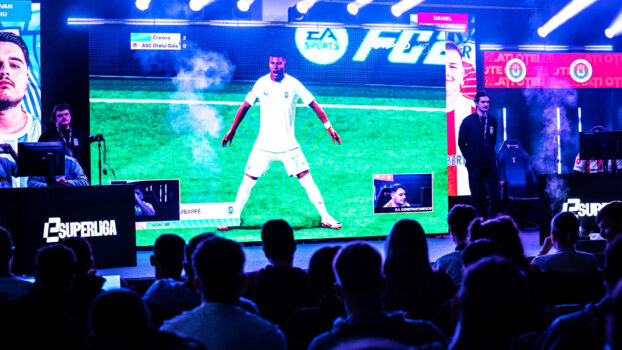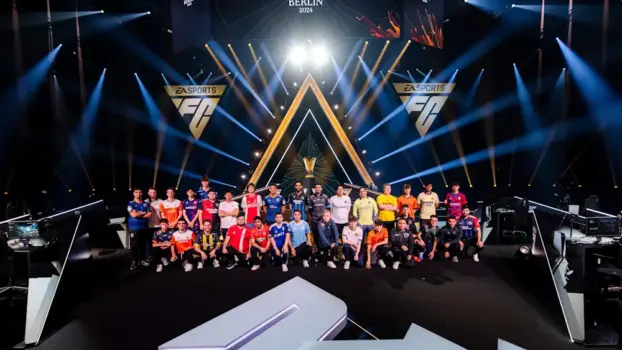A few years ago, winning a FIFA esports tournament mostly meant bragging rights, a trophy, and maybe a modest paycheck. Fast forward to EA SPORTS FC 25, and we’re now looking at a thriving ecosystem where players are competing for millions of dollars across a global calendar of events.
Prize pools are getting bigger, competition is fiercer, and football esports is starting to turn heads, even in circles traditionally dominated by real-world sports. So how exactly does the money in EA FC esports compare to traditional sports, and what does this mean for the future of competitive football gaming?
EA FC Esports Prize Pools in Numbers
The biggest event of the season is without a doubt the FC Pro World Championship, which now features a staggering $1,000,000 prize pool. This tournament is the climax of the FC Pro circuit, where the best players from regional leagues, Open Cups, and Play-Ins come together to fight for the title.
But it doesn’t stop there. EA has built a full competitive ecosystem around FC 25, distributing money across multiple tiers of competition:
- FC Pro Open – $532,000
- FC Pro Open Cups – $321,000
- FC Pro Play-Ins – $248,000
- eSPL – $437,241
- eChampions League – $281,000
- LaLiga FC Pro – $284,309
- ePremier League – $129,190
- Virtual Bundesliga – $113,804
- eLibertadores – $106,000
- eLigue 1 – $68,159
- eDivisie – $56,862
- eMLS Cup – $50,000
- eSuperliga – $45,287
- eLiga Portugal – $22,776

Image: eSuperligaro Facebook
We can group these into tiers to make it easier to understand:
- Tier 1 – $250,000 and up: FC Pro World Championship, FC Pro Open, eSPL, LaLiga FC Pro, eChampions League
- Tier 2 – $100,000 to $249,000: FC Pro Play-Ins, Open Cups, ePremier League, Virtual Bundesliga, eLibertadores
- Tier 3 – Below $100,000: Regional and national competitions like eMLS, eLigue 1, eDivisie, etc.
Altogether, EA FC 25 has already paid out well over $3.5 million USD this season in prize money.
As the audience continues to grow, so does the attention from other industries. Some fans already follow EA FC tournaments with the same intensity as real football matches, and that crossover has led platforms like SpeedAU Casino to appear more often in conversations around virtual football and esports-related engagement.
Esports vs Traditional Sports: Who’s Really Winning?
Let’s put these numbers into perspective.
In the NFL, players on the winning Super Bowl team each receive around $171,000 in bonuses. Not bad, but the Madden Bowl 2024 champion took home $250,000 on their own. That’s more than a Super Bowl winner’s personal bonus check.
In tennis, a player losing in the first round of a Grand Slam event can earn about $75,000. Meanwhile, just qualifying for the FC Pro Play-Ins can earn players several thousand dollars, with the top performers taking home tens of thousands.

When it comes to mega esports events, EA FC isn’t quite there yet. Titles like Dota 2 and CS2 have hosted events with prize pools of $10 million or more. Fortnite’s World Cup famously awarded $3 million to the solo winner in 2019.
But what makes EA FC esports different is how consistent and distributed the earnings are across multiple regions and formats. Players don’t need to win one massive event to go home with life-changing money, they can earn a living by performing across a season.
Why These Numbers Matter
The growth in prize money has changed the landscape of football gaming.
For players, it means esports can now be a sustainable full-time career. Competing in just two or three events per season can net a decent income, especially when factoring in team salaries and sponsorship deals.
For fans, higher prize pools raise the stakes and make tournaments more engaging. You’re not just watching someone win a controller and a handshake, you’re watching someone compete for their livelihood.
For brands, this growth in financial backing shows that EA FC esports is no longer a niche interest. It’s a serious investment opportunity. Sponsors like Gillette, PlayStation, Red Bull, and even major football clubs are actively involved.
These numbers also help bring structure and legitimacy. They allow for things like player unions, transfer markets, agent representation, and long-term contracts, just like in traditional sports.
EA FC’s Esports Economy
EA has carefully structured the FC Pro ecosystem to offer multiple entry points and consistent progression.
You have:
- Open Cups (regional qualifiers open to all)
- Play-Ins (for top performers)
- Domestic leagues (with their own prize pools)
- The World Championship (the ultimate goal)

Image: ea.com
This layered system encourages year-round engagement. And with the Esports World Cup in Saudi Arabia offering a total prize pool of $70 million, and EA FC included, there’s no sign of the money slowing down.
The esports market is expected to reach $6 billion by 2029. If EA continues investing in regional and international competitions, there’s a good chance FC Pro could soon rival the biggest games on the planet.
Still Growing, Still Climbing
No, EA FC 25 isn’t handing out $3 million Fortnite cheques, yet. But it’s quietly building one of the most stable and rewarding ecosystems in all of esports.
With over $3.5 million already handed out this season across dozens of tournaments, it’s becoming clear that virtual football is serious business. For players, fans, and sponsors, the money is real and the game is only getting bigger.
And with the 2026 World Cup hype already building, EA FC esports might just be warming up.
 FIFA Infinity The Absolute FIFA Site
FIFA Infinity The Absolute FIFA Site




